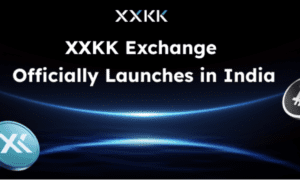In this digital world, Varun Tamminedi‘s groundbreaking research in the USA has revolutionized blockchain interoperability, creating new ways for different blockchain networks to communicate and exchange value.
Breaking Down Traditional Barriers
The traditional blockchain landscape has been characterized by isolated networks operating independently, limiting the technology’s full potential. However, recent innovations in cross-chain communication protocols are dismantling these barriers, enabling seamless information exchange and value transfer across different blockchain platforms.
Technical Innovations Leading the Way
The research highlights remarkable progress in addressing fundamental challenges through innovative approaches. Modern interoperability frameworks have successfully tackled protocol standardization issues and consensus mechanism compatibility, marking a significant leap forward in blockchain technology. These developments have resulted in reduced documentation errors by 65% and improved data accessibility by 75% across various sectors.
Healthcare and Financial Services Transform
The implementation of interoperable blockchain solutions has revolutionized healthcare data management, enabling secure sharing of patient records while maintaining strict privacy compliance. In financial services, cross-border payment processing has been dramatically streamlined, with settlement times reduced from days to minutes, accompanied by a 40% decrease in operational costs.
Supply Chain Evolution
One of the most significant impacts has been observed in supply chain management, where end-to-end visibility and product traceability have improved by 80%. This enhancement has led to more efficient operations and reduced documentation errors, demonstrating the practical benefits of blockchain interoperability in real-world applications.
Advanced Protocol Architecture
The research details innovative approaches to cross-chain communication, including packet-switching networks and hub-and-zone models. These architectures enable atomic transactions and connector-based routing while maintaining network neutrality and scalability. The implementation of sophisticated communication protocols has significantly improved transaction finality times, with some solutions achieving completion in as little as 1-2 seconds.
Security and Governance Framework
The research emphasizes the development of robust security measures and governance structures. New multi-signature protocols and comprehensive audit mechanisms ensure the safety of cross-chain transactions while maintaining operational efficiency. These advancements have particularly benefited enterprise-level implementations, where security and compliance are paramount.
Future Trajectory
The study indicates that the future of blockchain interoperability will be shaped by increased industry collaboration and standardization efforts. The focus is shifting towards developing more efficient cross-chain communication protocols while ensuring compliance with evolving regulatory requirements. This evolution represents a fundamental change in how we approach distributed systems and value exchange in the digital age.
Economic Impact and Industry Adoption
The economic implications of these developments are substantial, with various industries reporting significant cost reductions and efficiency improvements. The research shows an impressive adoption rate trajectory, with cross-chain success rates increasing from 82.5% in early 2021 to 97.2% in 2023, indicating growing confidence in interoperability solutions.
Standardization and Protocol Development
A key finding emphasizes the importance of standardized protocols in ensuring successful implementation. The development of universal standards that can adapt to emerging blockchain architectures while maintaining backward compatibility with existing systems has become a crucial focus area for continued advancement.
Regulatory Compliance Integration
The study addresses the critical aspect of regulatory compliance, highlighting the development of standardized compliance protocols for different jurisdictional requirements. This includes frameworks for cross-chain dispute resolution and liability frameworks for multi-chain operations, ensuring smooth operation across different regulatory environments. The research emphasizes establishing clear guidelines for smart contract enforcement while maintaining data sovereignty across borders.
Looking Ahead
The research presents a compelling vision for the future of blockchain technology, highlighting the need for continued innovation in areas such as quantum-resistant cryptographic protocols and advanced privacy-preserving mechanisms. These developments will be crucial as blockchain technology continues to evolve and find new applications across industries.
Overcoming Implementation Challenges
While significant progress has been made, the study also addresses the remaining challenges in implementing interoperable blockchain solutions. These include technical hurdles in cross-chain validation, bridge protocol performance, and the creation of innovative solutions for atomic cross-chain transactions.
In conclusion, the comprehensive analysis by Varun Tamminedi demonstrates that successful blockchain interoperability requires a delicate balance of technical innovation, standardization efforts, and practical implementation frameworks. As the technology continues to mature, it promises to revolutionize how businesses and industries interact and exchange value in the digital economy.



































